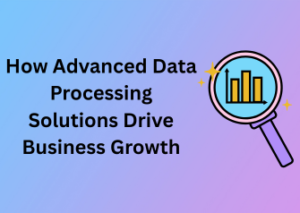Hello there, savvy marketer! Let’s dive into a topic that shapes the very foundation of digital marketing success, truly understanding shopper choices. You see, consumer decisions aren’t some random mystery box; they’re driven by a series of deliberate actions and some subconscious ones that leave digital footprints. And here’s the best part, you can track those footprints to uncover what customers want and why they click that buy button.
Why Actions Speak Louder Than Words
Here’s something you might not know: what people say they’ll do and what they actually do online don’t always align. For example, a friend might rave about planning to buy a high-end smartwatch. But their online behavior might show hours of comparison shopping for mid-range options. Guess what? That’s where your superpower comes in, observing real behaviors.
It’s all about what customers click, scroll through, or abandon in their virtual carts. These little digital moves are the treasure trove of intent. They tell stories about preferences, price sensitivity, and even emotions, all of which help you tailor everything from product descriptions to marketing campaigns.
How to Decode Actions for Deeper Insights
Here’s your roadmap to understanding what customers are subconsciously saying through their online activity:
- Track Purchase Journeys: Where do shoppers start on your website? What’s their click path? Maybe they hit the homepage, poke around the sale section, and land on a discounted item. Mapping this shows you how they’re wired to shop.
- Monitor Abandoned Carts: When shoppers abandon items in their carts, it’s not a rejection, it’s an opportunity! Maybe they’re waiting for a discount, or perhaps shipping costs scared them off. Actionable insight? Your checkout page or pricing strategy might need a fresh look.
- Examine Bounce Rates: If visitors are pogo-sticking (bouncing in and out of pages), it might mean they’re landing on content that’s not in sync with their expectations. Time to rethink keywords and improve relevance!
Actionable Advice for You
Reading shopper signals is one thing, but how do you use all this information effectively?
- Implement A/B Testing: Test different versions of product pages or headlines to see how visitors respond. Does Free Shipping on Orders Over $50 outperform 10% Off Today? Try it and learn!
- Personalize Experiences: Use past behaviors to create custom recommendations for shoppers. For example, if someone frequently browses athletic wear, highlight your newest sneakers or activewear bundles.
- Refine Ads: Insights from shopper actions can help you craft laser-targeted ad campaigns. Behavioral cues ensure you’re promoting the right product to the right people, minimizing irrelevant spends.
Practical Guide to Leveraging Public Forums for Insights

Hey there! Let’s dive into an exciting world many marketers overlook, public forums. These online spaces, from Reddit threads to niche community boards, are treasure troves when it comes to understanding your target audience. They’re not just spots where people hang out; they’re places where they bare their opinions, discuss real-world problems, and even drop hints about their unmet desires. In short, a goldmine for someone like you. Ready to learn how to leverage these gems? Let’s go!
Understanding the Value of Public Forums
Think about it: public forums are where some of the most raw and unfiltered conversations happen. People talk openly, without the inhibitions they might feel on more polished platforms like LinkedIn or even Instagram. This level of authenticity creates a valuable opportunity to tap into their real thoughts. You’ll find:
- Keyword-rich sentences: This gives you insight into how your audience actually *talks* about problems and solutions. Spoiler alert: it’s often not in marketing speak.
- Emerging trends: Spot topics picking up steam before your competitors do.
- Consumer pain points: Full-blown rants or questions can show you what’s missing in your industry.
Where to Start: A Step-by-Step Game Plan
- Pick the Right Forums: Research where your target audience spends their time. Platforms like Reddit, Quora, and specialized forums (e.g., those for hobbyists like gardening or tech enthusiasts) are a great start. Google searches like “best forums for [your niche]” can help you locate them.
- Lurk Before You Leap: Don’t just dive in with questions or promotion—you’ll stick out like a sore thumb. Spend time observing: What are people posting? What language are they using? How do they describe your type of products or problems?
- Search for Keywords: Use built-in search features on forums to find discussions around specific themes. For instance, if you sell skincare products, search for “acne treatments,” “sensitive skin,” or even frustrations like “moisturizer doesn’t work.”
- Track Forum Buzz Over Time: Do some posts keep popping up? Take note of recurring topics or complaints. These are insights with legs—they’re not passing fads.
- Engage Thoughtfully: Once you’ve done your homework, join discussions to offer meaningful advice or ask smart questions. Remember, good engagement can also position your brand as a helpful presence without being salesy.
Pro Tips for Turning Insights into Action
Okay, so you’ve found some juicy discussions—but what now? The key is translating this unfiltered data into strategies that make a difference for your business. Here’s how:
- Create relatable content: If you notice your audience struggling with something specific, make blogs, videos, or social posts addressing it. This shows you’re listening.
- Refine your SEO strategy: Those keywords you saw people organically using? Sprinkle them into your website or ad campaigns for better alignment with real-world language.
- Develop new products or features: Did you spot an untapped opportunity or repeated frustration? Brainstorm innovative ways to fill that gap.
Why This Works
The beauty of public forums is they’re like an ongoing focus group, but without hefty costs or awkward Zoom sessions. They let you peek into the psychology of your potential customers. If a baker is only as good as their ingredients, a marketer is only as good as their consumer insights. Using public forums correctly will give you fresher, richer “ingredients” to cook up your next success story.
Comparing Competitor Tactics Through Digital Trails
When it comes to staying ahead in the digital marketplace, keeping a close eye on your competitors is a no-brainer. With so many brands vying for attention online, examining their digital footprints can give you invaluable insights into strategies that work, and sometimes ones that don’t. Let’s take a closer look at how you can effectively track and analyze your competitors’ online moves to refine your own strategies.
Why Are Digital Trails So Important?
Think of digital trails as your competitor’s public diary. From the content they post on their blog to the ads they run on Facebook, every digital move they make reflects their strategy and priorities. By analyzing these actions, you can spot trends that resonate with your target audience or uncover weak spots in their approach that you can capitalize on. Essentially, you’re learning from their wins and their misses—without wasting your own resources.
Where to Look: Uncovering Their Tactical Trail
You might be asking, Where do I begin? Don’t worry—we’ve got you covered. Below are some places you should explore:
- Website: Think of a competitor’s website as their digital HQ. Look at their design, call-to-action buttons, pricing, product descriptions, and blog content. What are they emphasizing? Are they offering something unique? Their website reveals their core selling points.
- Social Media Platforms: Platforms like Instagram, Twitter (now X), LinkedIn, and TikTok can tell you so much about what’s working for your competitors. Look at their post frequency, engagement rates, hashtags, or even who’s commenting on their pages. Are they doing giveaways? Collaborating with influencers? Each post is a clue.
- PPC Ads and Display Campaigns: Paid ads reveal a lot about competitors’ efforts to capture new audiences. Use tools like Google Ads Transparency, SEMrush, or SpyFu to see what keywords they’re targeting and what their ad copy looks like.
- SEO Performance: What keywords are driving traffic to their site? Tools like Ahrefs or Moz can help you understand their content strategy and how they’re rising in search engine rankings. Are there gaps you can exploit?
- Email Marketing: Sign up for their newsletters or promotional emails to see how they communicate with customers. Are they offering discounts? Product sneak peeks? Following their email cadence can help you shape your own campaigns.
Turning Observation into Action
Collecting data is step one. Step two is figuring out how to use it effectively. Here are some tips:
- Benchmark against your own strategy: Identify areas where your competitors are outperforming you. Are they using visual storytelling better? Is their SEO game stronger? Use those insights to adjust your plan.
- Look for gaps: Are there customer needs they aren’t addressing? Spot opportunities they’ve missed and position your brand to fill those gaps.
- Don’t copy—improve: Instead of blindly following their tactics, think about how you can do it better. Whether it’s creating more engaging content, offering a better value, or targeting a more niche audience, make their tactics uniquely yours.
Keep It Ethical
One important reminder here: Always adhere to ethical standards when researching competitors. Everything you investigate should be information they’ve shared publicly—no sneaky business or trying to hack into private details. Healthy competition drives innovation, but unethical practices can hurt your brand’s reputation in the long run.
Effective Use of Search Engine Trends to Spot Opportunities

Hey there! Let’s talk about a secret weapon for spotting market opportunities that’s right at your fingertips: search engine trends. Think of search engines like Google as treasure troves of consumer behavior. They reveal what people care about, what they’re curious about, and what they need—all in real time. Today, we’re diving into how you can use search engine trends effectively to uncover hidden gold for your business.
Why Search Engine Trends Are a Goldmine
Search engines capture millions of user searches daily, making them windows into shifting public interests. Tools like Google Trends allow you to see how frequently specific terms are being searched over time. This is crucial for identifying growing demand, seasonal trends, or even spotting gaps in your market where you can swoop in.
For example, if you see a sudden spike in searches for eco-friendly skincare, that’s a pretty clear signal that sustainability is resonating with consumers. Rather than relying on guesswork or intuition, you’re tapping into data-driven insights to guide your business decisions.
How to Use Search Engine Trends to Your Advantage
Now that we’re all on the same page about why search trends are so valuable, let’s explore how you can use them in your digital market research:
1. Spot Emerging Trends Early
Keep a close watch on trending terms in your industry. Google Trends offers a “Trending Searches” feature that showcases what’s catching fire right now. If you notice a new topic gaining traction but not yet oversaturated, it could be your chance to enter the market early and establish your presence before competitors do.
2. Understand Seasonality
Not every trend is evergreen. Some may be seasonal, like holiday shopping search terms or “best winter jackets” queries in colder months. Use year-over-year comparisons on Google Trends to prepare for these patterns and plan your marketing efforts in advance. This ensures you’re hitting the right audience at the right time.
3. Monitor Geographic Demand
Did you know search trends can also be broken down by region? If certain products or services are more popular in specific geographic areas, you’ll know where to focus your advertising or even introduce new products. For example, vegan restaurants might trend higher in urban areas compared to rural ones.
4. Identify Content Opportunities
Are people asking questions like How to use face serums? or What are the benefits of probiotics? These insights indicate topics you can address in blogs, videos, or social media posts to attract and educate potential customers. Answering these questions directly through your content builds trust and establishes your authority in the field.
5. Keep Tabs on the Competition
Search trends don’t just show what customers are interested in—they can also reveal what competitors might be up to. If you see rising searches for a competitor’s brand or offer, analyze what they’re doing right and consider how you can differentiate yourself.
Pro Tips for Getting the Most from Search Data
- Use Filters for Specificity: Google Trends allows you to filter by time frame, region, category, and more. This helps you hone in on data that directly applies to your niche.
- Compare Multiple Terms: The comparison tool in Google Trends lets you examine the performance of several keywords side by side. This is great for testing which product name or marketing angle might resonate better.
- Think Long-Term: While short-term trends can be exciting, focusing on sustained, steady growth in search terms is often a safer bet for building a successful strategy.
Analyzing Customer Reviews to Improve Strategies
If you’ve ever found yourself scrolling through reviews before buying something online, you’re already familiar with the power of customer feedback. Those honest opinions and experiences hold a treasure trove of insights for businesses looking to sharpen their strategies. But simply reading a handful of reviews isn’t enough , let’s dive into why and how analyzing customer reviews can revolutionize your approach.
Why Customer Reviews Matter
Customer reviews are not just votes of confidence or complaint-filled commentary; they are direct megaphones from your audience. They give you unfiltered insights into:
- Consumer expectations: Find out what customers hoped for versus what they actually got.
- Pain points: Complaints often highlight areas in your product, service, or user experience that need improvement.
- Praise trends: What are you already doing right? Celebrate those recurring positive themes and double down on them.
Plus, don’t underestimate the emotional element of reviews — they often let you connect with your audience on a deeper level. After all, loyal customers usually care enough to vocalize how they feel.
Start with a Systematic Approach
To turn reviews into actionable insights, it’s best to organize and analyze them systematically. Here’s a handy, digestible process:
- Collect Reviews Across Platforms: From Amazon to Yelp, Google to Trustpilot, reviews are scattered across numerous platforms. Gather them in one place to create a comprehensive view of customer sentiment regarding your brand.
- Categorize Feedback: Distinguish between reviews focused on specific elements — such as product quality, shipping, customer service, or usability.
- Use Keyword Analysis: Look for frequently used terms. Tools like text analysis software can help identify key themes (e.g., “durable,” “delayed delivery,” or “confusing navigation”), which can save hours of manual parsing.
Spotting Patterns for Strategic Changes
Once the data is in, look at the big picture. You might uncover trends that demand immediate action. For example:
- If you notice recurring issues: Address these. For instance, if fifty reviews mention your packaging breaks during delivery, it’s a clear cue to revisit that aspect immediately.
- If customers repeatedly praise something: Leverage those insights. Maybe they love how responsive your app is. Use this in your branding or build campaigns around these highlights.
- Discover unmet needs: Some reviews reveal what customers feel is missing, like a feature or a size option. Incorporate those suggestions into future upgrades or product line expansions.
Enrich Strategies with Sentiment Analysis
Some brands are taking customer review analysis to the next level using sentiment analysis tools. These tools break down reviews not just for themes but also for attitudes. For instance, was the review enthusiastic, neutral, or frustrated? This kind of insight can guide everything from branding to crafting better customer communications.
Encouraging More Reviews
Don’t just stop at analyzing existing reviews. A solid strategy for growth includes encouraging customers to leave more feedback. Ask for reviews at key touchpoints — after a purchase, following an interaction with customer service, or when users hit a milestone in engagement with your product. The more feedback you collect, the sharper your understanding of customer preferences becomes.
Utilizing Social Media Signals for Better Direction
Social media is everywhere – let’s face it, before you even get halfway through your morning coffee, you’ve probably scrolled through a feed or two. But here’s the big question: are you using that constant buzz of likes, shares, retweets, and comments to guide your business decisions? If not, you’re missing a wealth of actionable insights! Let’s dive into how you can harness social media signals to give your brand a clear and profitable direction.
The Treasure Trove of Social Media Signals
First things first – what exactly are we talking about when we say social media signals? These are essentially the interactions people have with your content online: the likes, comments, shares, and even those valuable conversations happening in the DMs. Each one of these actions is a small but powerful indicator of what your audience finds compelling.
Think of social media platforms as customer feedback in real-time. Your audience is telling you what resonates with them – what makes them laugh, what intrigues them, and even what they dislike. Are they engaging heavily with a specific product announcement? Great! Does a campaign post fall flat? That’s a sign to tweak your strategy moving forward.
Steps to Decode and Effectively Use Social Media Signals
Social media signals might feel overwhelming at first, but don’t worry – breaking them down into actionable steps makes everything so much easier. Here’s where to start:
- Track Engagement Metrics: Use analytics on platforms like Facebook Insights, Twitter Analytics, or Instagram Insights to measure likes, shares, saves, and comments. Take special note of any spikes or surges – they’re the golden clues to what works.
- Understand Sentiment: Numbers are great, but don’t forget context. Are the comments on your posts positive, inquisitive, or… not so great? Use tools like social listening software (Sprinklr, Brandwatch, etc.) to monitor sentiment and detect patterns in customer emotions.
- Observe Trends Across Platforms: Pay attention to trends on various social platforms. Is TikTok abuzz with short, fun videos in your industry? Are Instagram users more responsive to behind-the-scenes photos? Each platform’s personality is different, and understanding this helps target your audience better.
- Look for Influencers and Advocates: Sometimes, the loudest signal doesn’t come directly from your audience – it comes from influential voices in your space. Identify who’s talking about your brand (or your industry) and collaborate with them for amplified reach.
Turning Signals Into Strategy
Gathering these signals is only half the battle. The real magic happens when you transform what you learn into concrete strategies. Here’s how:
- Content Planning: If certain types of posts are performing better – say, tutorials or memes – prioritize these in your future content calendar.
- Product Development: Are customers asking for a feature or consistently praising a certain element of your product? Use this feedback to inform your next product iteration.
- Campaign Optimization: Social signals can help fine-tune paid ad campaigns. Run A/B tests with different creative assets, and let metrics guide what you scale up.
Keep It Real
The key to utilizing social media signals is authenticity. Don’t just collect data – build genuine connections by actively engaging with your audience. Reply to comments, thank customers for their kind words, and, if need be, acknowledge mistakes openly. People love brands that feel human!
In a nutshell, social media signals are your real-time compass in the ever-changing digital landscape. By analyzing them wisely and weaving them into your strategy, you can grow a stronger connection with your audience and direct your business toward bigger successes. So go ahead, start listening, and let those signals guide the way!
Bridging Raw Data and Actionable Plans
So, you’ve got all this juicy online data—tons of reviews, social media metrics, search trends, and more. But now what? How do you actually make sense of it all and turn it into something useful? This is where the magic happens: bridging the gap between raw data and actionable business plans. Let’s explore how you can make this transformation smoothly and effectively.
Why Actionable is the Key
First things first—data in its raw form might look like a giant pile of unbaked dough. Sure, it has potential, but unless you know what to do with it, it won’t provide any real value. The goal here is to turn that messy pile into baked bread (or even a fancy croissant, if you’re ambitious). Actionable data means you’ve distilled the chaos into insights that tell you exactly what steps to take next.
Start by Asking the Right Questions
The process begins with framing the right questions to guide your analysis. For instance:
- Are you looking to improve a specific product’s performance?
- Do you want to figure out why your competitors are outranking you?
- Is your goal to attract a new customer segment?
With these questions in mind, the raw data becomes a treasure trove, ready to supply the answers. This focus ensures every insight is tied directly to a business objective.
Data Segmentation: Your Power Move
Here’s a tip: break the data into manageable pieces instead of staring at one overwhelming spreadsheet. Segment the information by categories like customer demographics, product categories, time periods, or even specific behaviors (e.g., customers who leave reviews versus those who don’t.
This allows you to spot trends and patterns that would otherwise slip under the radar. For example, you might notice that millennials prefer purchasing your products on mobile devices, or that your sales peak during specific holidays. Each nugget of segmented data is a potential golden ticket to improving your strategies.
Turn Numbers into Stories
Believe it or not, humans are wired for storytelling—even when it comes to data! Once you’ve segmented and analyzed, create a narrative around your insights. For instance:
- Instead of this: “25% of our visitors bounce off the website within 30 seconds.”
- Say this: “One in four visitors leaves our site almost as quickly as they arrive. Could it be because our homepage doesn’t load fast enough or fails to hook them?”
Notice the difference? A story gives your data context, sparks curiosity, and offers a clear path for action.
Map Insights to Real Action Plans
Now comes the really satisfying part: putting your insights to work. Let’s say your analysis reveals a gap in your product range for eco-conscious shoppers. Don’t stop at just jotting it down! Take concrete steps, such as:
- Research eco-friendly suppliers for new product options.
- Run a digital campaign targeting environmental enthusiasts.
- Test this product expansion in a smaller region to gauge interest.
By this point, you’re not just storing insights—you’re leveraging them to grow and adapt.
Embrace Tools to Streamline the Process
A quick heads-up: don’t try to go it alone! Tools like data visualization software (e.g., Tableau or Power BI), consumer behavior analytics platforms, and even AI-driven insights can make your life a whole lot easier. These tools help you bridge the gap faster by turning clunky spreadsheets into visually digestible charts, trends, and predictions.











